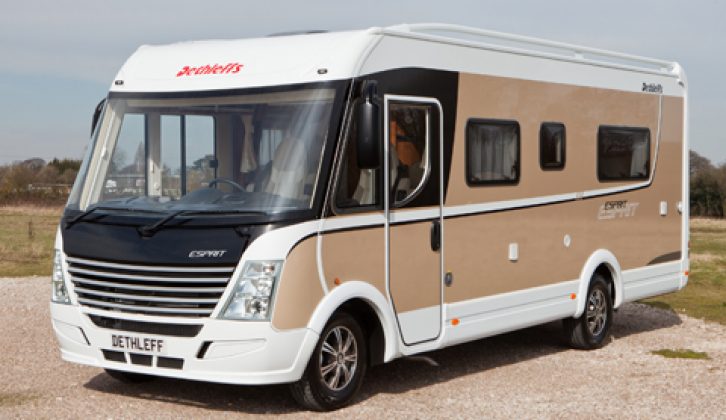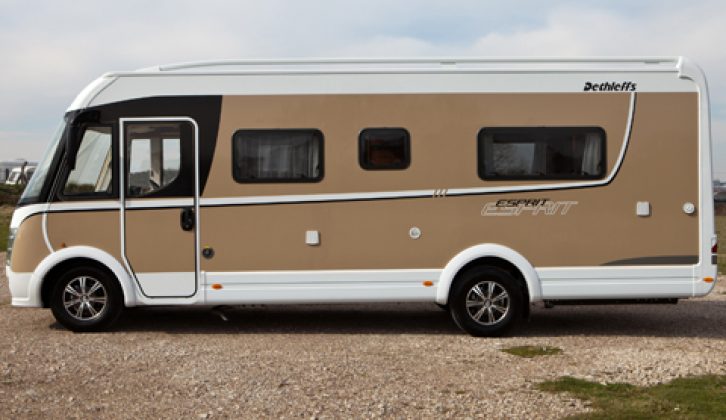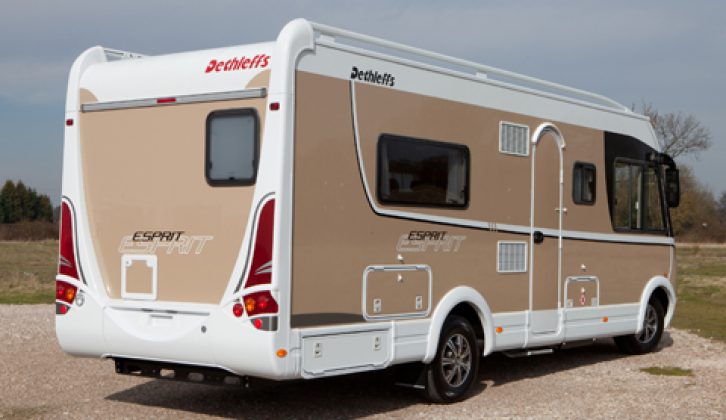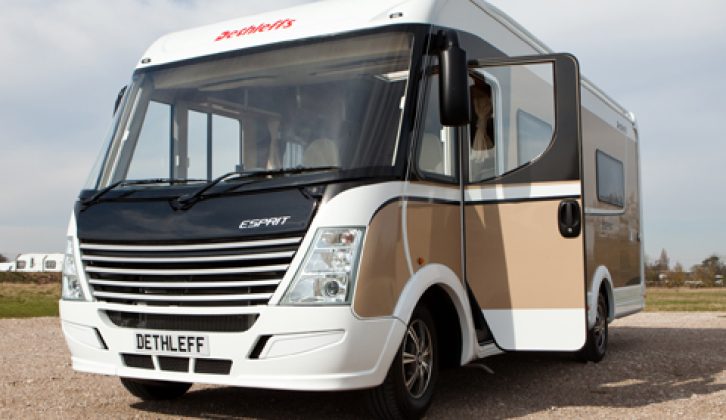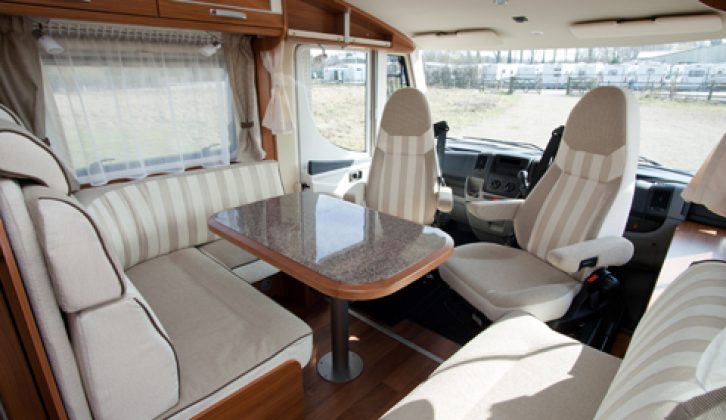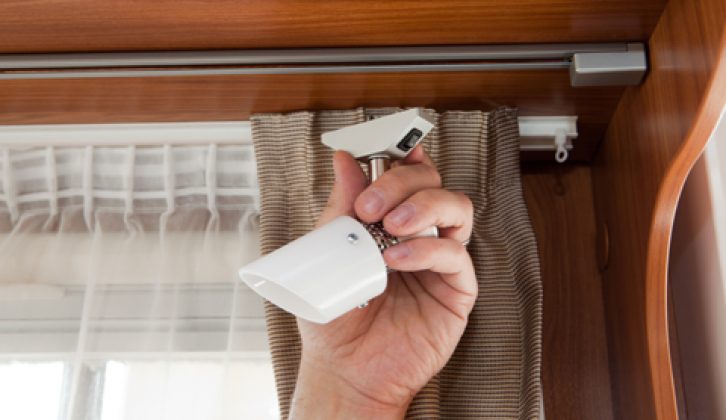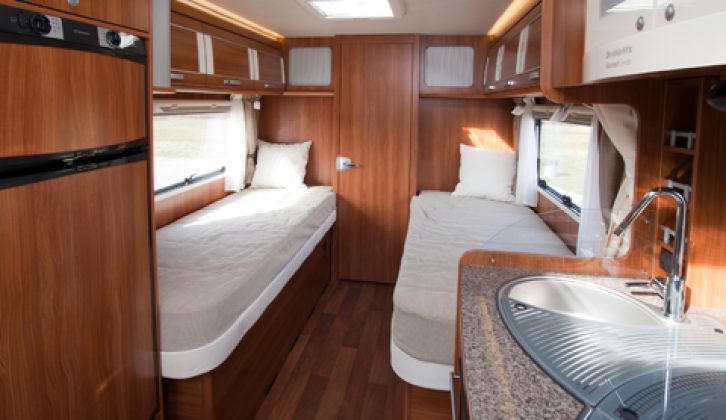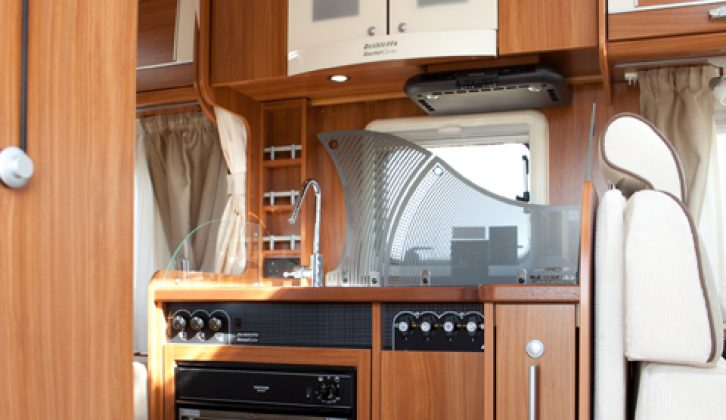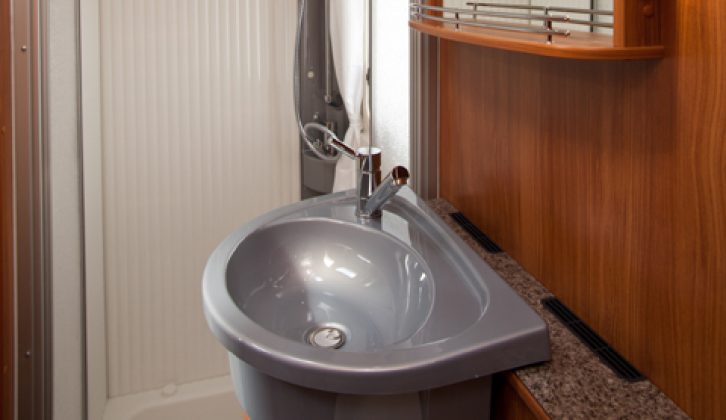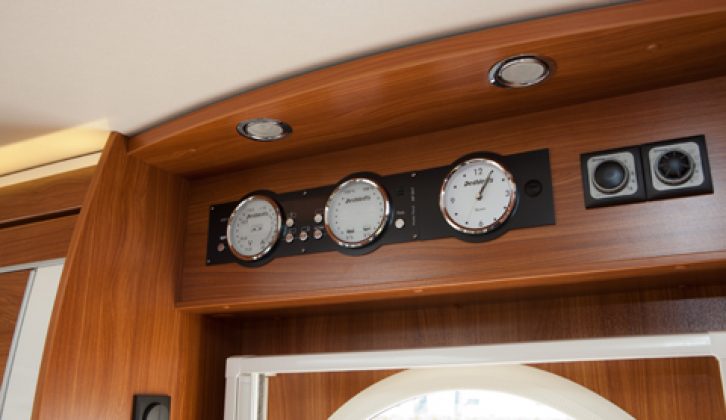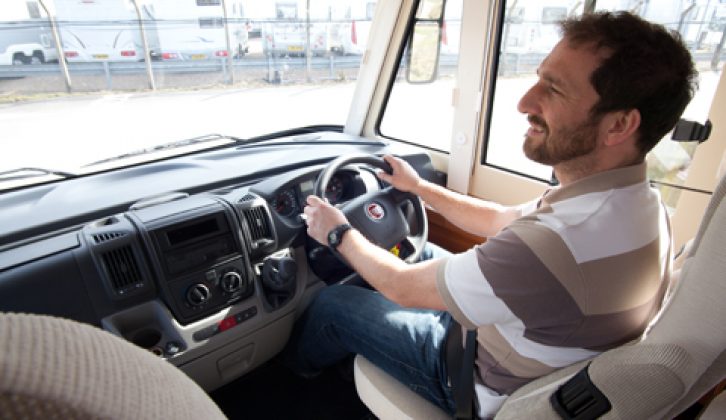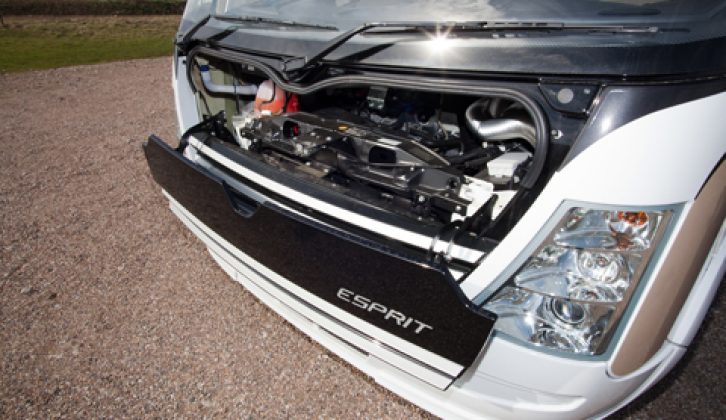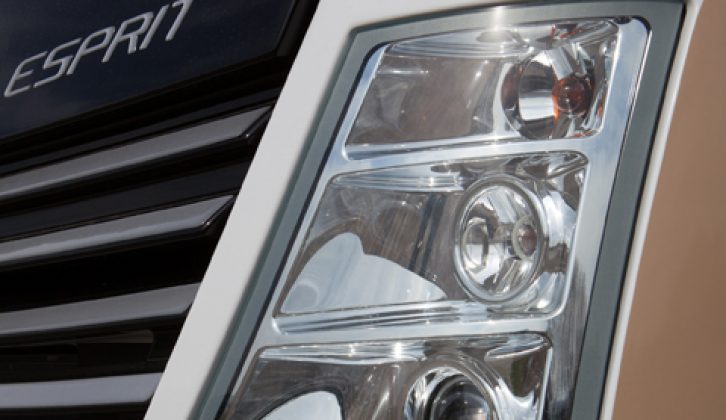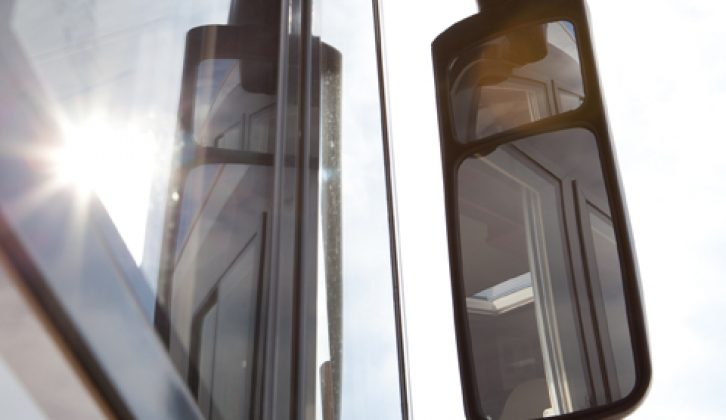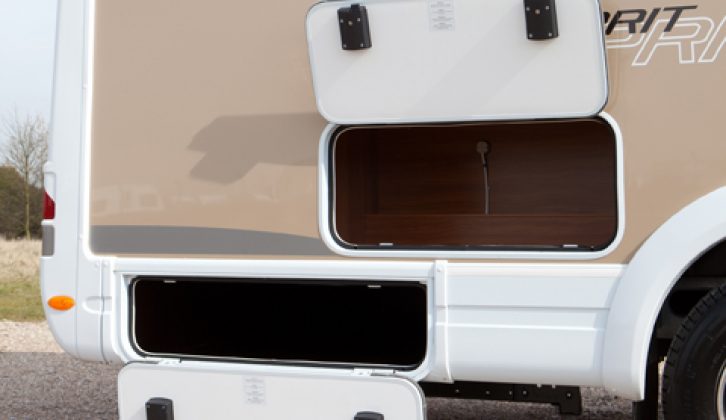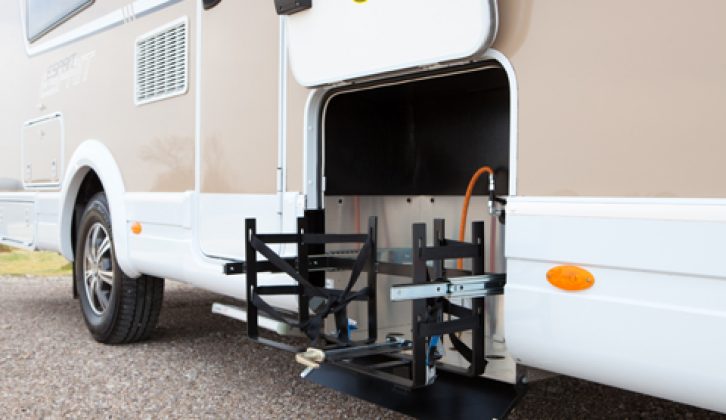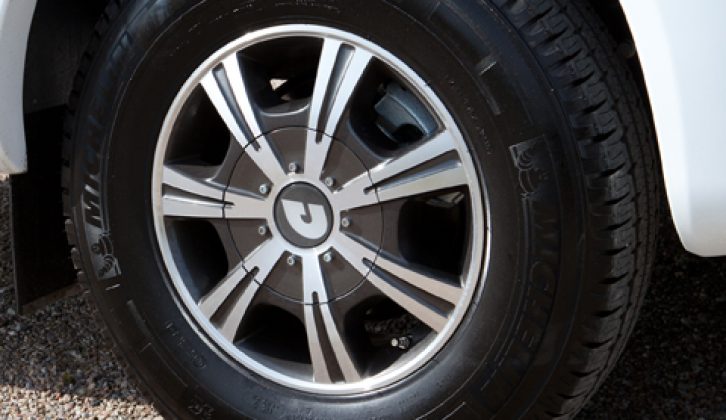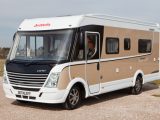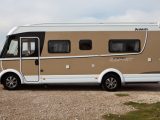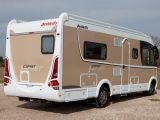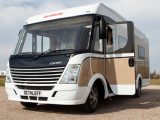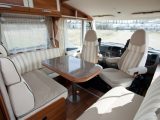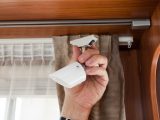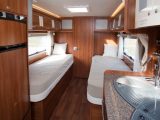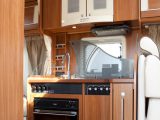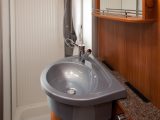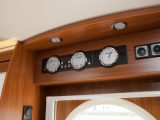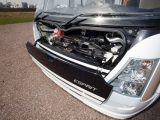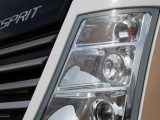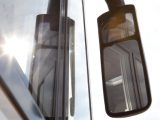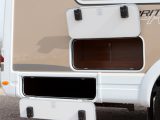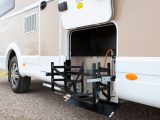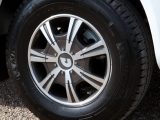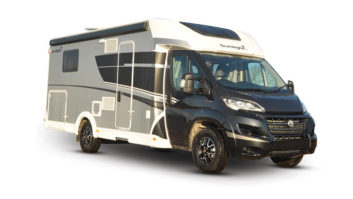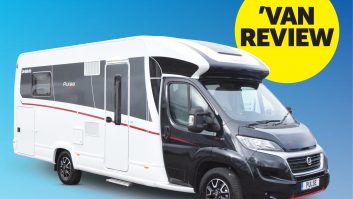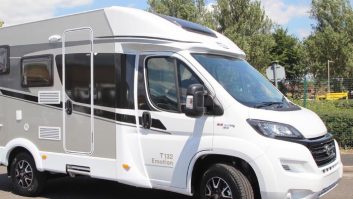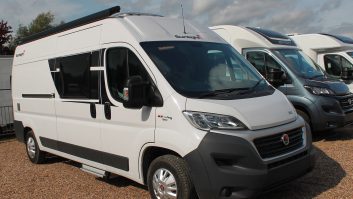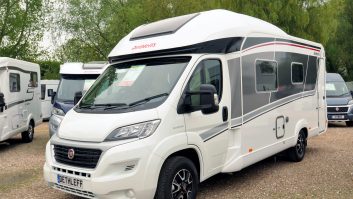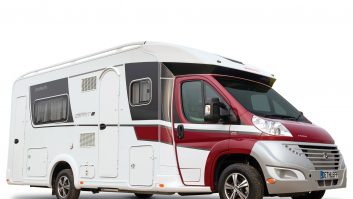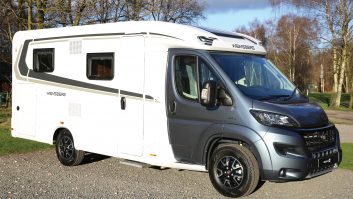Verdict
With great looks and oozing with style, this is a superbly built A-class with genuine four-berth capacity and a great kitchen. It’s guaranteed to turn heads.
Pros
Long single beds; exterior colours; driving view; handling
Cons
Washroom space; habitation door on offside
The market for imported, Continental-built motorhomes is a fraction of what it was three years ago. Ravaged by the Euro exchange rate, budget models could no longer compete with better-specified UK alternatives, while the price of premium ranges rocketed.
However, there is still an appetite for models that simply aren’t available new here in the UK, such as low-profiles with pull-down roof beds and prestigious A-class motorhomes.
The Esprit on test here is a great example of the latter. The I7010, with twin single beds, is one of seven floorplans in either a low-profile or A-class bodyshell. Completely overhauled for 2011 by Dethleffs – Europe’s biggest motorhome manufacturer – it’s superbly made and more than a tad flamboyant. Rather than boring white or ubiquitous silver, Dethleffs offers the Esprits in four eye-catching pastel treatments: bright sand, laguna blue, milky green and cacao grey. The model tested here is the cacao grey, and in a spot of sunlight it really stands apart from rivals.
Driving manners On the road, the widened, ‘big picture’ windscreen gives panoramic forward vision, while the suspended wing mirrors do a good job on rearward views, with no obvious blind spots thanks to the wide-angle, upper insert.
Powered by the 3.0-litre Fiat Ducato turbodiesel engine, and based on the four-tonne AL-KO chassis, the ’van handles beautifully, with lots of power, very little body roll in corners or from crosswinds, and barely any habitation noise.
Being a right-hand-drive A-class inside a shell built for the mainland European market, the cab entry door is on the passenger side – not ideal, but you quickly get used to it, and at least the windscreen wipers are re-handed for the UK roads. Driver and passenger airbags and cab air-con are standard UK kit, a higher specification than that offered to the Esprit’s Continental customers.
On board, there’s an L-shaped lounge (which converts to two forward-facing belted passenger seats) with side sofa, L-shaped kitchen and fridge/freezer tower amidships, twin single beds towards the rear, and transverse washroom.
Fitted to this model is the Luxus pack bundle, which includes an extractor hood for the kitchen, roof rails, alternative headlights, and Cypress Villa wood furniture finish, the latter playing a big part in its stylish interior.
The floor is level throughout, with several storage compartments underneath, including one across the width of the ’van’s rear, and two in the floor beneath the kitchen.
A fixed-leg table in the lounge area will always have both fans and detractors, but the seating around it is comfortable, with the onboard freshwater tank beneath the front-facing bench for better winterisation, and the waste tank is insulated under the floor. The underside of the pull-down bed has built-in downlights and storage shelves, and we love the snap-fit directional lights that can be removed from their rails and re-fitted elsewhere. Truma Combi heating and hot water are both gas and electrically operable.
The L-shaped kitchen is compact but clever. The three-burner hob lid is split, so you can uncover only one burner, and part-cover the kitchen sink to maximise useable workspace. It has a combined grill/oven, massive fridge freezer, and plenty of storage space. With the extractor hood as part of the Luxus pack, it is comparable to kitchens offered in most UK-built ’vans.
The twin single beds are huge – one at 6’8” in length, the other 6’4” – and they double as a separate, feet-up lounging area. This is catered for by a flat-screen TV bracket (concealed in a locker behind a high-level tambour-door) that swivels through 180° to service the front or the rear of the ’van. The pull-down double bed over the cab seats has been widened to 150cm.
Only the washroom skimps on space. There’s a mirrored wardrobe in here, which really squeezes space around the swivel toilet. When seated on the throne, the basin is intrusive. The separate shower cubicle, though, with its partition door and twin drain plugs, is perfectly adequate.
Technical Specifications
| Payload | 726 kg |
| MTPLM | 4000 kg |
| Shipping Length | 7.39 m |
| Width | 2.33 m |
